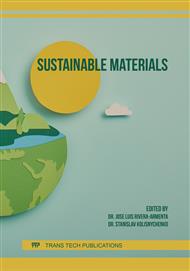p.3
p.9
p.17
p.23
p.29
p.35
p.41
p.47
Mechanical Properties of New Sustainable Polymeric Formulations for Rotomoulding Processes
Abstract:
This paper shows the results of the mechanical characterisation of a series of new sustainable polymeric formulations filled with almond shell and cellulosic fibres for its use in rotomoulding process. Up to ten formulations of polyethylene and polycaprolactone, were developed with a content from 10 to 40 wt% of natural filler. The addition of these fillers decreased the mechanical properties, mainly when the formulation was carried out by physical mixing. However, good interfacial interaction between the polymer and filler was produced in the compounding process, obtaining final formulations appropriated for rotomoulding.
Info:
Periodical:
Pages:
41-46
Citation:
Online since:
March 2019
Keywords:
Price:
Сopyright:
© 2019 Trans Tech Publications Ltd. All Rights Reserved
Share:
Citation:



